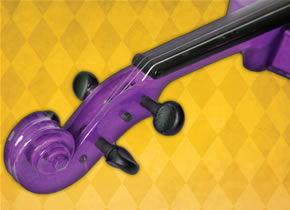The relatively newly formed North Carolina Chamber Orchestra (first concert, April 2018) presented a program featuring with one exception music from the 19th century. The NCCO began life as a string ensemble, but in this performance, winds, brass, and percussion joined the fifteen string players. Music director Paul Manz led the ensemble in the Well-Spring Theatre.
The guest soloist was Greensboro Symphony Orchestra principal bassoonist Carol Bernstorf, performing the 1811 Bassoon Concerto in F, Op. 75, by Carl Maria von Weber (1786-1826). The work is in the standard classical three movement form of fast-slow-fast. Weber was primarily known as an opera composer, and the orchestral introduction is, indeed, theatrical, with dramatic pauses, before the soloist enters. Bernstorf’s command of the bassoon was made clearly evident as she traversed her way through the many changes in character. From the opening regal theme to the lyric second tune, through the athletic arpeggios, trills and leaps, and from the very high to the very low registers of the instrument, the bassoonist wonderfully negotiated the virtuosic score. The Adagio highlighted Bernstorf’s lovely tone in the long-winded flowing melody. Again, Weber exploits both the top and bottom of the bassoon’s range. The third movement presents a cute tune that is heard throughout the rondo. More dramatic orchestral interludes and fast passages from the soloist made for a winning conclusion to this delightful and brilliant piece. Maestro Manz kept the ensemble and soloist together, with clear and precise direction throughout.
The evening opened with the Hebrides Overture (also known as Fingal’s Cave) Op. 26 (1830), by Felix Mendelssohn (1809-47). The composer wrote the work after visiting the cave on the Hebridean isle of Staffa in 1829. From where I was sitting, the strings were somewhat overshadowed by the winds and brass. However, both the dramatic and the tender passages were vividly carved out by the ensemble. I was immediately impressed with the clarity of sound that comes from a smaller ensemble; one can hear the tiniest of details without the mass associated with a large orchestra. Of course, the occasional brass flub or ragged entrance is also noticeable.
Manz told the small but attentive audience that “The Last Spring,” by Edvard Greig (1843-1907), was a favorite of Ray Henderson, the conductor of the first ensemble that Manz played in as a youngster. The short work is a gentle essay using folk-inspired tunes. Concertmaster Dan Skidmore ably supplied the short solo violin part.
The second half of the program began with the scurrying Overture to The Marriage of Figaro (1786) by Wolfgang Mozart (1756-91). It is always a delight to hear, and the ensemble played with great gusto.
2020 is the 250th anniversary of the birth of Ludwig van Beethoven (1770-1827); audiences should expect to hear a lot from the composer this year. And, appropriately, the NCCO concluded the concert with the master’s Symphony No. 8 In F, Op. 93 (1812), which the composer referred to as “my little Symphony in F,” as opposed to the much larger 6th symphony in the same key.
This is a delightful, light-hearted work with clever and humorous passages throughout. I thought the opening fast movement could have been a bit faster, but the ensemble turned in an entirely winning performance. Especially notable were the royal brass calls in the third movement and the boisterous finale that ends the symphony with good humor.











